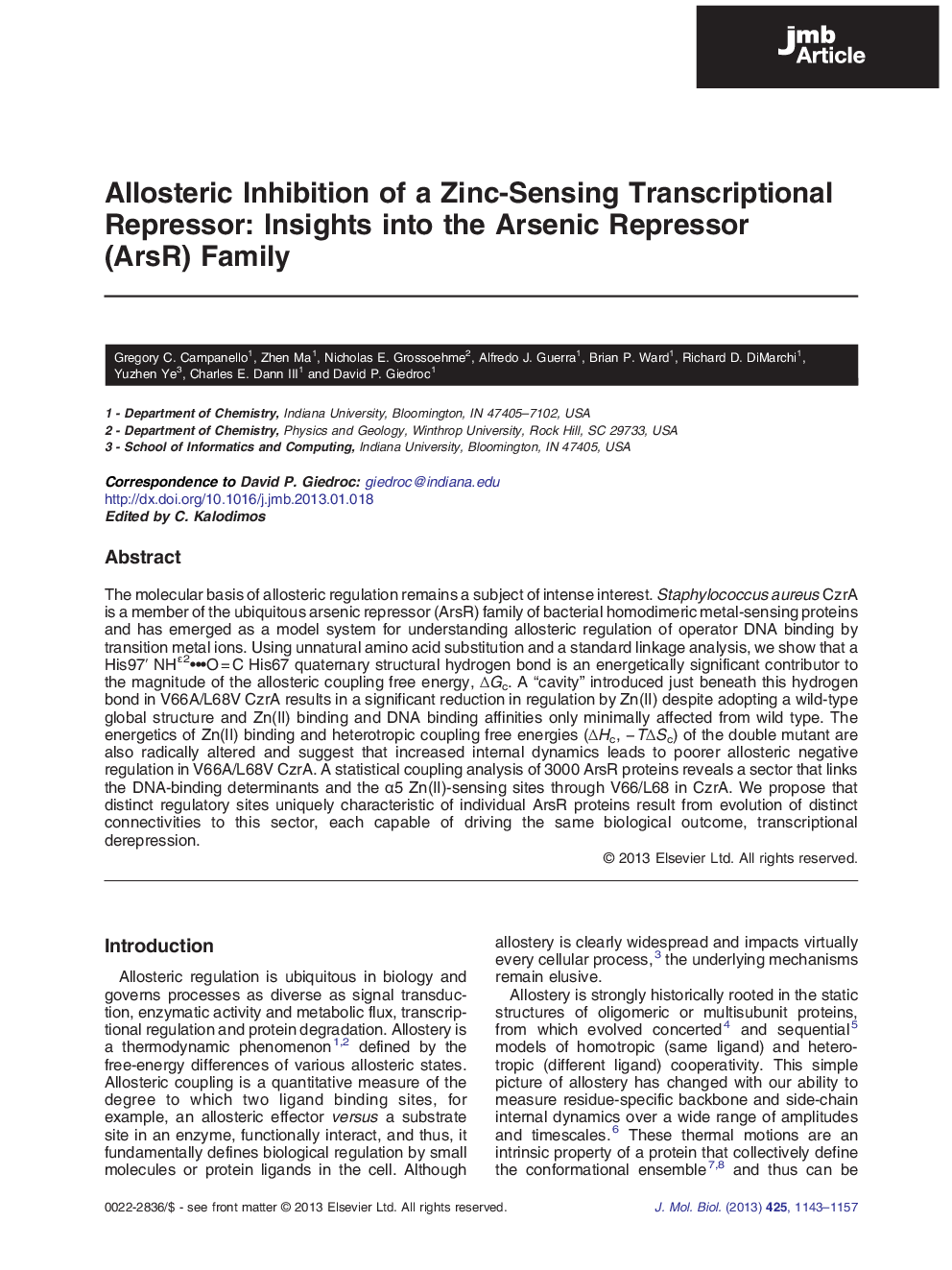| کد مقاله | کد نشریه | سال انتشار | مقاله انگلیسی | نسخه تمام متن |
|---|---|---|---|---|
| 2184823 | 1095935 | 2013 | 15 صفحه PDF | دانلود رایگان |

The molecular basis of allosteric regulation remains a subject of intense interest. Staphylococcus aureus CzrA is a member of the ubiquitous arsenic repressor (ArsR) family of bacterial homodimeric metal-sensing proteins and has emerged as a model system for understanding allosteric regulation of operator DNA binding by transition metal ions. Using unnatural amino acid substitution and a standard linkage analysis, we show that a His97′ NHε2
•
•
• O = C His67 quaternary structural hydrogen bond is an energetically significant contributor to the magnitude of the allosteric coupling free energy, ∆Gc. A “cavity” introduced just beneath this hydrogen bond in V66A/L68V CzrA results in a significant reduction in regulation by Zn(II) despite adopting a wild-type global structure and Zn(II) binding and DNA binding affinities only minimally affected from wild type. The energetics of Zn(II) binding and heterotropic coupling free energies (∆Hc, − T∆Sc) of the double mutant are also radically altered and suggest that increased internal dynamics leads to poorer allosteric negative regulation in V66A/L68V CzrA. A statistical coupling analysis of 3000 ArsR proteins reveals a sector that links the DNA-binding determinants and the α5 Zn(II)-sensing sites through V66/L68 in CzrA. We propose that distinct regulatory sites uniquely characteristic of individual ArsR proteins result from evolution of distinct connectivities to this sector, each capable of driving the same biological outcome, transcriptional derepression.
Graphical AbstractFigure optionsDownload high-quality image (261 K)Download as PowerPoint slideHighlights
► The molecular basis of allosteric regulation or linkage remains a subject of intense interest.
► A zinc-regulated repressor, CzrA, is used to investigate the underpinnings of allostery.
► Selective excision of a quaternary structural hydrogen bond nearly blocks linkage in CzrA.
► Introduction of a “cavity” just below this hydrogen bond also compromises linkage in the absence of a global structural change.
► A statistical coupling analysis reveals a sector that links the DNA binding site and the zinc-sensing site through an allosteric “hot-spot” defined by cavity residues.
Journal: Journal of Molecular Biology - Volume 425, Issue 7, 12 April 2013, Pages 1143–1157